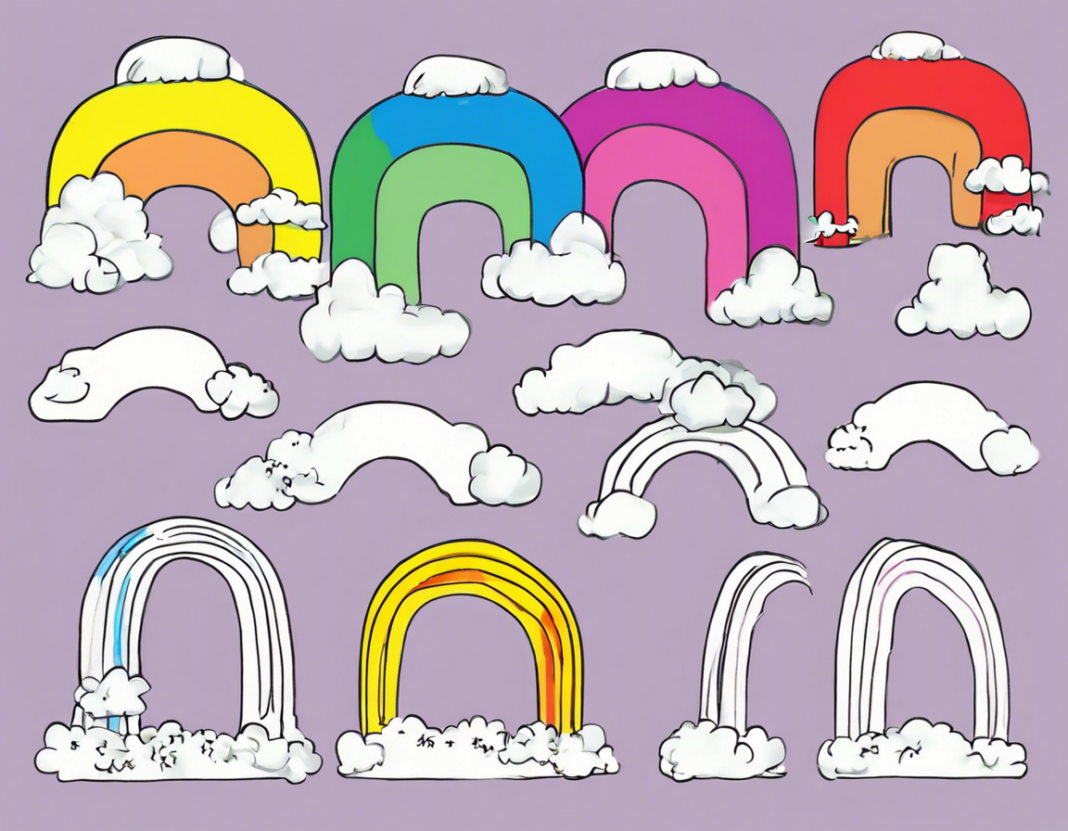Introduction
Drawing a rainbow is one of those simple yet satisfying activities that bring joy and creativity to both children and adults. The vibrant and colorful arc of a rainbow has captivated artists and individuals alike for centuries, symbolizing hope, beauty, and the power of nature. In this comprehensive guide, we will explore the techniques, tools, and tips for mastering the art of drawing a rainbow.
Understanding the Anatomy of a Rainbow
Before delving into the actual drawing process, it is essential to understand the basic anatomy of a rainbow. A rainbow is a meteorological phenomenon that occurs when sunlight is refracted, reflected, and dispersed in water droplets, resulting in a spectrum of light appearing in the sky. The primary colors of a rainbow, in order from the outer arc to the inner arc, are red, orange, yellow, green, blue, indigo, and violet.
Materials Needed
To begin drawing a rainbow, you will need the following materials:
- Drawing paper: Choose a smooth and sturdy paper that can withstand multiple layers of colors.
- Pencils: A set of colored pencils or pastels in the rainbow colors.
- Eraser: To correct any mistakes or smudges.
- Ruler: For creating straight and even lines if needed.
- Blending tool: Optional for blending colors smoothly.
Step-by-Step Guide to Drawing a Rainbow
Step 1: Sketch the Outline
Start by lightly sketching a gentle arc on your paper using a pencil. This will serve as the outline of your rainbow. Ensure that the arc is smooth and even.
Step 2: Add the Colors
Begin adding the rainbow colors in the order of red, orange, yellow, green, blue, indigo, and violet. Start with red on the outer edge of the arc and work your way towards the inner arc with each color. Be mindful of blending the colors smoothly to create a seamless transition between each shade.
Step 3: Blend and Shade
Once you have added all the colors, use a blending tool or your fingers to blend the colors together, creating a harmonious transition from one hue to the next. You can also add shading to give the rainbow more depth and dimension.
Step 4: Final Touches
To enhance the rainbow, you can add details such as clouds, sun, or raindrops to create a charming and whimsical scene. Use your creativity to personalize your rainbow drawing.
Tips for Drawing a Realistic Rainbow
- Use a light touch when adding colors to prevent harsh lines and create a seamless blend.
- Experiment with different drawing techniques such as layering, stippling, or cross-hatching to add texture and depth to your rainbow.
- Practice drawing rainbows from observation to improve your understanding of light, color, and perspective.
- Study the work of other artists who have captured rainbows in their pieces to gain inspiration and insights for your own drawings.
Common Mistakes to Avoid
- Avoid using dull or muddy colors that can diminish the vibrancy of the rainbow.
- Do not rush the blending process, as rainbows have a soft and ethereal quality that requires careful blending of colors.
- Refrain from overworking the rainbow by adding too many layers of color, which can result in a cluttered and messy appearance.
Frequently Asked Questions (FAQs)
1. How can I make my rainbow drawing stand out?
To make your rainbow drawing stand out, consider adding a contrast background, such as a stormy sky or a lush green landscape. This will make the rainbow pop and add visual interest to your artwork.
2. Can I draw a rainbow using watercolors?
Yes, you can certainly draw a rainbow using watercolors. Start by sketching the outline with a pencil, then layer the watercolors in the rainbow colors, blending them together for a seamless transition.
3. What is the best paper for drawing a rainbow?
Opt for a heavyweight paper with a smooth surface, such as Bristol board or mixed media paper. These types of paper can handle multiple layers of color without warping or bleeding.
4. How do I create a double rainbow in my drawing?
To create a double rainbow, simply draw a second arc parallel to the first one, mirroring the colors of the primary rainbow. Ensure that the spacing between the two arcs is consistent for a realistic effect.
5. Can I add glitter or metallic accents to my rainbow drawing?
Yes, you can add glitter or metallic accents to enhance the rainbow drawing. Consider using metallic gel pens or glitter glue to highlight certain areas of the rainbow and make it sparkle and shine.
6. What are some creative ways to incorporate a rainbow into other artworks?
You can incorporate a rainbow into various artworks, such as landscapes, abstract compositions, or even portraits. Consider using the rainbow as a symbolic element to convey themes of hope, diversity, or unity in your artwork.
Conclusion
Drawing a rainbow is a delightful and rewarding artistic endeavor that allows you to explore the beauty and magic of color. By following the step-by-step guide, incorporating tips and techniques, and avoiding common mistakes, you can master the art of drawing a rainbow with confidence and creativity. Let your imagination soar as you bring to life the enchanting colors of the rainbow on paper.
